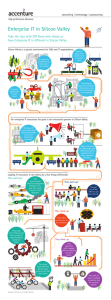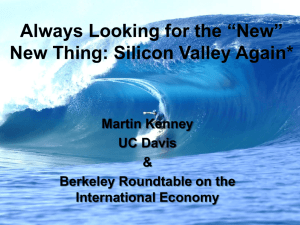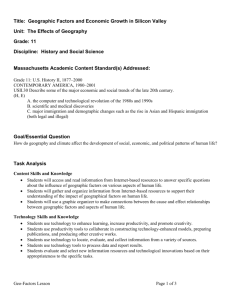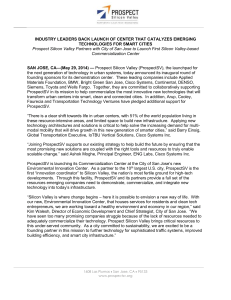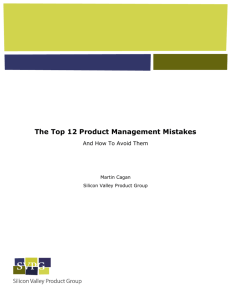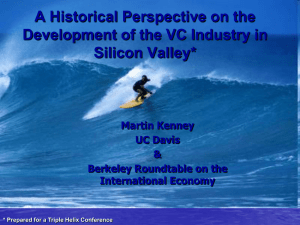Silicon Valley - IP Conference 2014
advertisement
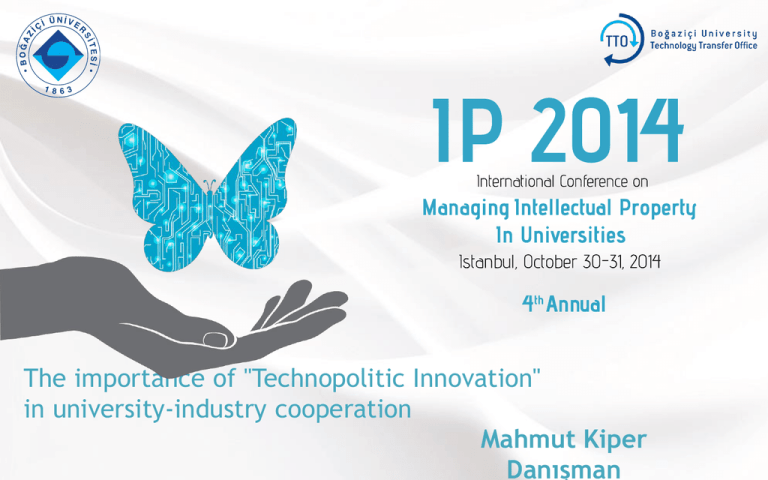
The importance of "Technopolitic Innovation" in university-industry cooperation Mahmut Kiper Danışman Summary of innovation types (Source:Kotsemir M.,Abroskin A.,2013) Technopolitic Innovation policy (s) design, which leads to changes in the technological paradigm and providing a critical economic gains in size. 1-Bayh Dole Act • “P.L. 96-517, Patent and Trademark Act Amendments of 1980” • “Innovation's golden goose” The Economist-Technology Quarterly,2002 • 28,000 patents that the American government owned in 1980, fewer than 5% had been licensed to industry. • Since 1980, American universities have witnessed a tenfold increase in the patents they generate, spun off more than 2,200 firms to exploit research done in their labs, created 260,000 jobs in the process, and now contribute $40 billion annually to the American economy. Bayh-Dole:Possibly the most inspired legislation all over the world • • • • • • • • Kanada (1985), Japonya (1998), İngiltere (1998), Almanya (1998, 2001), Fransa (1999), Kore (1998,2000, 2001) Çin (2002) And others….. 2- Japan Miracle in 1980’s and first half of 1990’s: • • • • • TQM Just in Time Kanban Six Sigma …. New business model innovations in Production Management Systems İnnovation and Development (Product/Process) 3- Korea and China Miracle From İmitation to İnnovation (Creative İmitation) From İmitation to İnnovation Far East Asia Countries said that: “to be successful, you have to learn how to both imitate and innovate.” Oded Shenkar Recent Innovation Tools • • • • • • Open Innovation Networking and Clustering Regional Innovation System Sectoral Innovation System Technology Transfer Intermediaries Etc. Silicon Valley: Global Model or Unique Anomaly * "Silicon Valley is the only place on Earth not trying to figure out how to become Silicon Valley". Bob Metcalfe *Main theme of IX.Triple Helix International Conference, Stanford Univ.2011 Silicon Valley or Valley of Creative Destruction What will be the next innovation wave of the Valley? • o Creative Industries: Social technologies are changing the nature of creative industries allowing consumers greater access to arts, culture and entertainment. Application also includes the vast global markets of tourism and travel. • o Education and Life-Long Learning: Transforming education and publishing using information technology. • o Clean Energy and Environmental Technologies: The deployment of renewable energy results in lower costs that speed up further adoption. • o Advanced Manufacturing: The application of information technology, simulation tools and sensors to create precision manufacturing including additive manufacturing or 3D printing, a process of making three-dimensional solid objects from a digital model. • o Health Care: Using information technology to create opportunities for personalized medicine including web-based medical platforms and genomics which uses a biometric profile to target diagnosis and treatment to the genetic makeup of individuals. Source:Henton D., Held K.,2011 What will be the next innovation wave of the Valley? • o Creative Industries: Social technologies are changing the nature of creative industries allowing consumers greater access to arts, culture and entertainment. Application also includes the vast global markets of tourism and travel. • o Education and Life-Long Learning: Transforming education and publishing using information technology. • o Clean Energy and Environmental Technologies: The deployment of renewable energy results in lower costs that speed up further adoption. • o Advanced Manufacturing: The application of information technology, simulation tools and sensors to create precision manufacturing including additive manufacturing or 3D printing, a process of making three-dimensional solid objects from a digital model. • o Health Care: Using information technology to create opportunities for personalized medicine including web-based medical platforms and genomics which uses a biometric profile to target diagnosis and treatment to the genetic makeup of individuals. Source:Henton D., Held K.,2011 What will be the next innovation wave of the Valley? “It is not about imitating the technology innovations of Silicon Valley but instead about applying technology that is appropriate to each region. Hence, it is a mistake to see Silicon Valley in terms of the current wave but rather as an example of a resilient region that has successfully adapts to constant change. “ Henton D., Held K.,2011 Natural /Artificial STP One of the Regional Innovation Cluster in Korea Universities in Global Innovators Index The only other Asian nation to make the 2012 list is South Korea, with 7 percent of the overall companies/ organizations. That is a 75 percent increase in representation there year over year, with four new entrants, two of which are universities and two of which are scientific research centers. Universities and Research Centers are in Global Innovators Index • The only other Asian nation to make the 2012 list is South Korea, with 7 percent of the overall companies/ organizations. That is a 75 percent increase in representation there year over year, with four new entrants, two of which are universities and two of which are scientific research centers. KAIST-Korea Advanced Institute for S-T OLEV-On Line Electrical Vehicle Lessons Lerned-1 Lessons Lerned-2 Recent Trends depend on “System Approach” and System Approach depends on inter/transdiscipliner behaviour Lessons Lerned-3 Technology Transfer Intermediaries Lessons Lerned-4 Public Authorities’ support approach should depend on flexibility, creativity and originality; • respect and regard universities/Research Organizations genetic codes, instead of one fit all aproach , (Public Central Universities, Public Regional Universities, Private Universities…) • give beneficiaries flexibility with flexible umbrella law/quidance to shape their mechanisms which is strong in system approach instead of Shaping USİ mechanisms with sharp laws and/or regulations which allows isolated center. Lessons Lerned-5 Impact Assesments better than input-output analyses Some Factors can be; -Lead (public or private) -Supply creative nd talent HR -Network width -Technologicak competitiveness in current focused area -Commercialization potential -Global cooperation waves of Last but not least “Nothing is ready-made; everything is to be made.” (Hilary Putnam, 1983) Teşekkürler…. Mahmut Kiper
